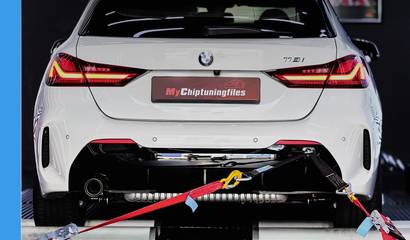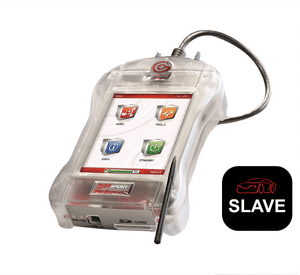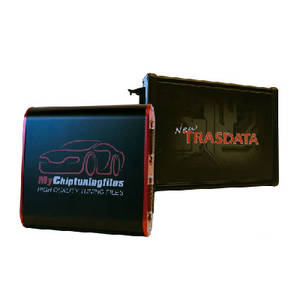Monday 17 November

We’ve all been there and let’s agree that there’s nothing more annoying than turning your car’s key and hearing nothing but only a clicking sound. The only thing worse than it would be complete silence. Yes! We’re talking about a dead battery here. It is one of the most common yet one of the most frustrating car problems. The issue can arise in extreme weather or when your car's been sitting idle for a while. But don’t worry! Knowing how to jump start a car can get you back on the road in no time. This guide will show you exactly how to use jumper cables to rescue your ride, so you’re never caught off guard.
Understanding the Basics: What is a Jump Start?
Before we get to the actual step by step guide, let's quickly go through the basics. What we call a jump start is a quick fix for a dead battery. If your car's battery has lost its charge, it’s obvious that it can't start the engine on its own. This is when you can use your jumper cables for the rescue. Connect your dead battery to a fully charged one in another car or a portable jump starter. This way, you give it the boost it needs to get going. This temporary power surge is just enough to start the engine and get you back on the road.
Tools You Need to Jump Start a Car
First things first! To successfully jump start a car, you'll need a few essential tools:
- The first and the most important tool you’ll need are Jumper cables. These are heavy-duty cables with alligator clips on both ends, used to connect the batteries of two vehicles.
- A functioning vehicle with a charged battery or a portable jump starter. It’ll serve as the power source to transfer energy to the dead battery.
- Gloves and safety glasses are optional but highly recommended. These offer protection while working with car batteries, and remember that we never compromise on safety!
Step-by-Step Guide: How to Jump Start a Car
1. Safety First:
The first thing to make sure before you jump start a car is whether you are in a safe spot or not. If you’re on the roadside, turn on your hazard lights to warn other drivers. Don’t even think about jumping a car if you see leaks or a cracked battery. It’s just too risky!
2. Position the Vehicles:
If you’re using another car to jump start yours, park them close enough so the jumper cables can reach both batteries, but don’t let the cars touch. This is crucial to avoid any electrical mishaps. Using a portable jump starter? Just place it near the dead battery.
3. Turn Off Both Vehicles:
Before connecting those jumper cables, make sure both cars are off and the keys are out of the ignition. This helps prevent any unexpected electrical issues.
4. Attach the Jumper Cables
This is the most critical part. Follow these steps carefully:
- Red to Dead: Attach one end of the red (positive) cable to the positive terminal (+) of the dead battery.
- Red to Donor: Connect the other end of the red cable to the positive terminal (+) of the charged battery.
- Black to Donor: Attach one end of the black (negative) cable to the negative terminal (-) of the charged battery.
- Black to Metal: Instead of connecting the black cable to the dead battery’s negative terminal, attach it to an unpainted metal surface on the car's engine block or frame. This step reduces the risk of sparks near the battery.
5. Start the Donor Vehicle
With the jumper cables securely connected, start the car with the charged battery. Let it run for a few minutes to juice up the dead battery.
TIP: If you want to know about WinOLS and Chiptuning tools you can visit MyChiptuningFiles.
6. Start the Dead Vehicle
Now, try starting the car with the dead battery. If it fires up, let it run for 15-20 minutes to allow the alternator to fully recharge the battery. If it doesn’t start right away, wait a few more minutes and try again.
7. Disconnect the Jumper Cables
Once the dead car is running, it’s time to remove the cables. Do this in the reverse order you connected them:
- Black from Metal: Remove the black cable from the unpainted metal surface on the car with the dead battery.
- Black from Donor: Disconnect the black cable from the negative terminal of the donor vehicle.
- Red from Donor: Detach the red cable from the positive terminal of the donor vehicle.
- Red from Dead: Finally, remove the red cable from the positive terminal of the previously dead battery.
8. Let the Engine Run
After the successful jump start, keep the engine running for at least 30 minutes to ensure the alternator fully recharges the battery. If possible, take a short drive instead of just letting it idle.
Troubleshooting Common Issues
Sometimes, even after following all the steps, your car might still refuse to start. Here’s what to check:
- Loose or Corroded Battery Terminals: Make sure the battery terminals are clean and the jumper cables are tightly connected. If there's corrosion, clean it off before trying to jump start again.
- Dead Battery in the Donor Vehicle: If the donor car's battery is weak, it won't provide enough power. Try using a different vehicle or a portable jump starter.
- Faulty Starter or Alternator: If your car still won’t start after a successful jump, the starter or alternator might be the problem. You’ll need a pro to take a look.
Keep these tips in mind, and you'll be back on the road in no time!
Tips for Preventing a Dead Battery
Prevention is key to avoiding a dead battery and the hassle of jump-starting your car. Here are a few simple tips:
- Regular Battery Maintenance: Keep those battery terminals clean and tightly connected. A quick check can go a long way!
- Drive Your Car Regularly: If your car sits idle for too long, the battery might not stay charged. Aim to take it for a spin at least once a week, especially in cold weather.
- Turn Off Electronics: Make sure all lights, the radio, and other electronics are off before you leave your car. Forgetting them can drain your battery fast.
- Check Battery Health: Get your battery checked regularly, particularly before winter hits. If it’s over three years old, consider replacing it to avoid surprises.
A little care can save you from a lot of trouble!
When to Replace Your Battery
Knowing how to jump start a car is crucial, but sometimes a battery is just too old or weak to hold a charge, even after a successful jump. Here are some signs it might be time to replace your battery:
- Slow Engine Crank: If your engine cranks slowly when you start your car, your battery might be on its last legs.
- Battery Warning Light: If the battery warning light on your dashboard lights up, it’s a clear sign that something’s wrong with your battery or charging system.
- Swollen Battery Case: A swollen or bloated battery case means the battery has overheated and needs to be replaced immediately.
- Frequent Jump Starts: If you're constantly needing to jump start your car, it's a strong hint that it's time for a new battery.
Don’t wait until it’s too late—keep an eye out for these signs and replace your battery when needed!
Choosing the Right Replacement Battery
When it’s time to replace your battery, picking the right one is crucial. Here’s how to make the best choice:
- Check the Owner’s Manual: Your car’s owner manual will tell you exactly what type of battery you need.
- Consider the Climate: If you live in an area with extreme temperatures, choose a battery designed to handle those conditions.
- Compare Warranties: Opt for a battery with a solid warranty. A good warranty shows the manufacturer’s confidence in their product.
The Importance of Battery Recycling
When it’s time to replace your car battery, remember that the old one isn’t just junk. Even though it’s no longer useful in your car, a used battery contains materials that can be very toxic if not disposed of properly. Car batteries, especially lead-acid ones, are packed with hazardous substances like lead, sulfuric acid, and other heavy metals. These can cause serious environmental and health problems if not handled correctly. That’s why recycling your old battery isn’t just a good idea; it’s a must.
Environmental Impact of Improper Disposal
The environmental impact of improperly disposing of car batteries is severe. When a battery is tossed out with regular trash or left in a landfill, the toxic materials inside can seep into the soil and groundwater. Lead, a powerful neurotoxin, can contaminate drinking water, leading to serious health problems for both humans and wildlife. Sulfuric acid, another component, is highly corrosive and can damage plants, aquatic life, and even concrete if it leaks into the environment.
These pollutants can build up over time, causing lasting damage to ecosystems and biodiversity. Plus, car batteries don’t break down—they can linger in the environment for hundreds or even thousands of years. This makes the need for recycling even more critical. By recycling car batteries, we can keep these dangerous substances out of the environment and prevent long-term harm.
Also Read: What Does FWD Mean, And What Are The Pros And Cons Of FWD?
Conserving Natural Resources
Recycling car batteries isn’t just about preventing environmental contamination—it’s also crucial for conserving natural resources. Car batteries contain valuable materials like lead, plastic, and acid, all of which can be reclaimed and reused to make new batteries. In fact, the lead in a typical car battery is nearly 100% recyclable.
By recovering and reusing these materials, we can cut down on the need for raw material extraction. Mining for lead, for example, is energy-intensive and can cause severe environmental damage, including habitat destruction, soil erosion, and water pollution. Recycling lead from old batteries reduces the demand for new mining, helping to minimize these harmful impacts.
Similarly, recycling the plastic components of car batteries reduces the need for new plastic production, conserving petroleum resources and shrinking the environmental footprint of plastic manufacturing. In short, recycling car batteries helps protect our planet in more ways than one.
Legal and Regulatory Requirements
In many regions, strict regulations govern the disposal of car batteries because of the hazardous materials they contain. For example, in the United States, the Battery Act mandates that retailers must accept used batteries for recycling and prohibits the disposal of lead-acid batteries in landfills or incinerators. Similar laws are in place across the European Union and other parts of the world. These regulations are designed to ensure that car batteries are recycled properly, safeguarding public health and the environment.
Failing to comply with these rules can lead to hefty fines and legal penalties. For businesses, this means that proper battery disposal is not just about being environmentally responsible but also about staying on the right side of the law. For consumers, it emphasizes the importance of returning used batteries to authorized recycling centers or retailers instead of disposing of them with regular trash.
Conclusion
Knowing how to jump start a car is an invaluable skill that can save you from being stranded and keep your day on track. By following the steps outlined in this guide, you can safely and efficiently jump start a car using jumper cables. Remember to take preventive measures to maintain your battery's health and know when it’s time for a replacement. With this knowledge, you’ll be well-prepared for any unexpected battery issues in 2024 and beyond.
news.related_news
Chiptuning tools
Whether you own a car, truck or tractor: we have the best equipment and software for tuning your petrol and diesel engine. With our chiptuning tools it is possible to easily read out the original engine software of your vehicle and upload it to our website. And then it's up to us to provide you with high-quality and customized chip tuning files. Curious about our range of chiptuning tools? Check it out via the button below!









